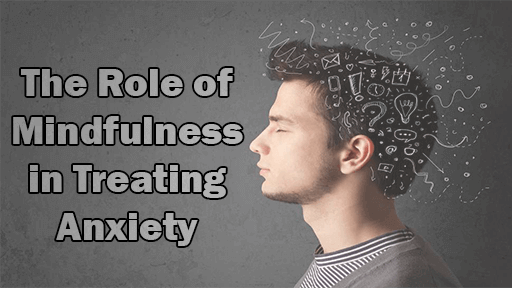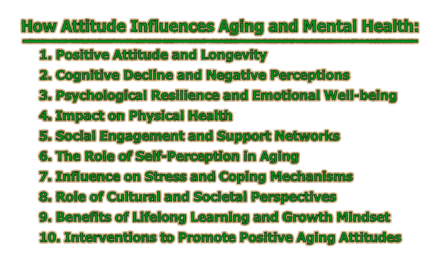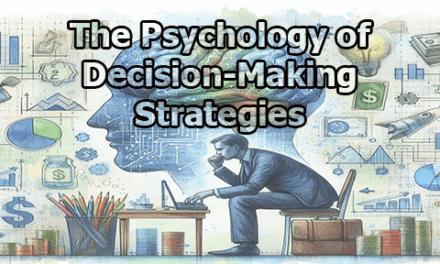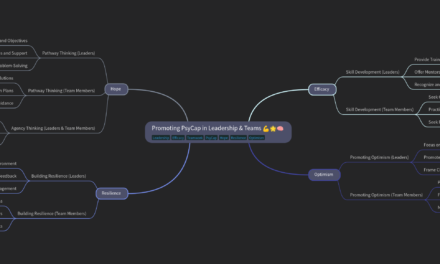The Role of Mindfulness in Treating Anxiety:
Anxiety disorders affect millions of people worldwide, impacting their daily lives and overall well-being. While various therapeutic approaches exist, mindfulness has emerged as a powerful and evidence-based strategy for managing and alleviating anxiety. This article explores the role of mindfulness in treating anxiety.
1. Understanding Mindfulness: Mindfulness is a practice deeply rooted in ancient contemplative traditions, notably drawing inspiration from Buddhist meditation. Developed in a modern therapeutic context by Jon Kabat-Zinn, mindfulness involves purposeful attention to the present moment, devoid of judgment. Kabat-Zinn (2003) defines mindfulness as “paying attention on purpose, in the present moment, and without judgment.” This intentional awareness fosters a non-reactive and non-judgmental mindset, creating a space for individuals to observe their thoughts and feelings without becoming entangled in them.
Research indicates that mindfulness involves a shift in cognitive processing, emphasizing observation rather than attachment to thoughts and emotions (Brown & Ryan, 2003). By cultivating this awareness, individuals can break free from the automatic, often negative, thought patterns associated with anxiety.
2. Neurobiological Changes: The transformative effects of mindfulness on the brain have become a focal point of research. Hölzel et al. (2011) conducted a study revealing that regular mindfulness practice can induce structural changes in the brain, particularly in regions linked to emotional regulation and self-awareness. These alterations, observed through neuroimaging, are associated with improved emotional resilience and a reduced susceptibility to anxiety.
The study suggests that mindfulness may have a neuroprotective impact, influencing the amygdala, which plays a crucial role in processing emotions. The findings underscore the potential of mindfulness not only as a psychological intervention but also as a tool that can bring about tangible changes in the brain’s structure and function.
3. Reduction in Rumination: Anxiety often involves persistent and excessive rumination, wherein individuals dwell on distressing thoughts. Mindfulness disrupts this cycle by encouraging individuals to observe their thoughts without judgment. Roemer and Orsillo (2009) propose that mindfulness interventions teach individuals to acknowledge their thoughts and emotions without becoming entangled in them.
Mindfulness practices, such as mindful breathing and body scan exercises, redirect attention away from rumination, breaking the habitual pattern of anxious thinking. By fostering non-judgmental awareness, mindfulness empowers individuals to detach from the grip of anxious thoughts and create a healthier relationship with their cognitive processes.
4. Enhanced Emotional Regulation: Emotional regulation is a key component of anxiety management, and mindfulness has been found to play a pivotal role in this aspect. Chiesa et al. (2013) conducted a meta-analysis that demonstrated the positive impact of mindfulness on emotional regulation and the reduction of anxiety symptoms.
Mindfulness practices cultivate a non-reactive awareness of emotions, allowing individuals to observe and accept their feelings without being overwhelmed by them. By promoting a balanced and non-judgmental approach to emotions, mindfulness equips individuals with the tools to navigate challenging emotional states more effectively.
5. Mindfulness-Based Cognitive Therapy (MBCT): Mindfulness-Based Cognitive Therapy (MBCT) represents an integration of mindfulness principles into traditional cognitive therapy. Developed by Segal, Williams, and Teasdale (2002), MBCT is designed to prevent the recurrence of depressive episodes, but its applications extend to anxiety as well.
Kuyken et al. (2016) conducted a study highlighting the effectiveness of MBCT in reducing anxiety symptoms. By combining mindfulness practices with cognitive strategies, MBCT provides individuals with a comprehensive set of tools to identify and change negative thought patterns, ultimately breaking the cycle of anxiety recurrence. The structured nature of MBCT makes it a valuable intervention for individuals seeking a systematic and evidence-based approach to managing anxiety.
6. Acceptance and Commitment Therapy (ACT): Acceptance and Commitment Therapy (ACT) is a therapeutic approach rooted in mindfulness principles that encourages individuals to accept their thoughts and feelings rather than trying to control or eliminate them. Developed by Hayes et al. (2011), ACT integrates mindfulness with behavioral strategies to promote psychological flexibility – the ability to adapt to situational demands while pursuing one’s values.
Through mindfulness exercises and acceptance techniques, ACT assists individuals in distancing themselves from anxious thoughts. By fostering a non-judgmental attitude towards internal experiences, ACT helps individuals commit to values-driven actions even in the presence of anxiety, ultimately reducing the impact of anxiety on daily functioning.
7. Mindful Breathing Techniques: Central to mindfulness practices are mindful breathing techniques, which have been shown to activate the parasympathetic nervous system, promoting a relaxation response. Brown and Gerbarg (2005) highlight that mindful breathing can counteract the physiological arousal associated with anxiety.
By focusing on the breath, individuals engage in a grounding practice that brings attention to the present moment. This intentional breathing fosters a sense of calmness, reducing the heightened physiological responses often associated with anxiety. Mindful breathing techniques are easily accessible and can be employed as a practical tool in the midst of anxious moments.
8. Mindfulness-Based Stress Reduction (MBSR): Mindfulness-Based Stress Reduction (MBSR), developed by Jon Kabat-Zinn in 1982, is a structured program that combines mindfulness meditation and yoga. Numerous studies, including a meta-analysis by Goyal et al. (2014), support the efficacy of MBSR in reducing anxiety symptoms.
MBSR provides participants with a systematic approach to developing mindfulness skills. Through guided meditation, yoga, and discussions, individuals learn to apply mindfulness to various aspects of their lives. The program’s comprehensive nature makes it a widely utilized intervention for individuals seeking a holistic approach to anxiety management.
9. Mindfulness and Gratitude: The practice of mindfulness is often intertwined with cultivating gratitude, which has been associated with lower levels of anxiety. Wood et al. (2010) found that mindfulness encourages individuals to focus on positive aspects, fostering a sense of appreciation for the present moment.
By incorporating gratitude into mindfulness practices, individuals can shift their focus from anxiety-inducing thoughts to positive aspects of their lives. This shift in perspective contributes to a more optimistic mindset, counteracting the negative cognitive patterns associated with anxiety.
10. Mindfulness in Group Therapy: Group-based mindfulness interventions offer a unique and supportive environment for individuals dealing with anxiety. Evans et al. (2008) conducted a study demonstrating that group mindfulness therapy enhances social support and decreases anxiety symptoms.
Group therapy provides a sense of community and shared experience, reducing feelings of isolation often associated with anxiety. The collective mindfulness practice fosters a supportive atmosphere where individuals can openly discuss their challenges and successes, creating a sense of camaraderie in the journey towards anxiety management.
11. Mindfulness and Self-Compassion: Incorporating self-compassion into mindfulness practices has been emphasized as particularly beneficial for individuals dealing with anxiety. Neff (2003) posits that self-compassion involves treating oneself with kindness and understanding, especially in moments of struggle.
Mindfulness encourages individuals to observe their thoughts without judgment, and combining this with self-compassion allows for a more nurturing and supportive inner dialogue. This approach helps individuals develop resilience in the face of anxiety, fostering a sense of self-worth and reducing the harsh self-criticism often associated with anxious thoughts.
12. Mindfulness Apps and Technology: The accessibility of mindfulness practices has been greatly enhanced through the advent of mindfulness apps and technology. Huberty et al. (2019) found that mobile mindfulness interventions, such as Headspace and Calm, can effectively reduce anxiety.
These apps offer guided mindfulness sessions, making it convenient for individuals to integrate mindfulness into their daily routines. With features like reminders and progress tracking, technology facilitates consistent mindfulness practice, empowering individuals to manage their anxiety in a user-friendly and personalized manner.
13. Mindfulness for Specific Anxiety Disorders: Mindfulness interventions have shown promise in addressing various anxiety disorders. Jazaieri et al. (2013) explored the efficacy of mindfulness-based interventions for generalized anxiety disorder (GAD), finding significant reductions in anxiety symptoms.
Additionally, Goldin and Gross (2010) conducted research on the application of mindfulness in social anxiety disorder, suggesting that mindfulness can be a valuable component in the treatment of specific anxiety disorders. Tailoring mindfulness interventions to the unique characteristics of different anxiety disorders highlights its versatility in addressing diverse clinical presentations.
14. Long-Term Impact: Longitudinal studies provide valuable insights into the sustained benefits of mindfulness for anxiety management. Arch and Craske (2006) conducted research indicating that the positive effects of mindfulness extend beyond immediate symptom relief, suggesting a lasting impact.
Individuals who engage in regular mindfulness practice may experience enduring changes in their cognitive and emotional responses to anxiety. This long-term impact reinforces the notion that mindfulness is not just a short-term coping mechanism but a transformative approach with enduring benefits.
15. Integration with Traditional Therapies: Mindfulness is often integrated into traditional therapeutic approaches, enhancing their effectiveness. Hofmann et al. (2010) advocate for the integration of mindfulness into existing cognitive-behavioral therapies for anxiety.
Clinicians can seamlessly incorporate mindfulness techniques into sessions, providing individuals with a diverse set of tools for managing anxiety. This integration allows for a personalized and comprehensive treatment approach that addresses both the cognitive and emotional aspects of anxiety, ultimately improving treatment outcomes.
In conclusion, the role of mindfulness in treating anxiety is multifaceted, encompassing neurobiological changes, emotional regulation, and various therapeutic interventions. Backed by a growing body of research, mindfulness offers individuals a transformative pathway towards managing anxiety and fostering overall well-being. As the field continues to evolve, mindfulness stands as a promising and accessible tool for those seeking relief from the grips of anxiety.
References:
- Arch, J. J., & Craske, M. G. (2006). Mechanisms of mindfulness: Emotion regulation following a focused breathing induction. Behaviour Research and Therapy, 44(12), 1849–1858.
- Brown, K. W., & Gerbarg, P. L. (2005). Sudarshan Kriya yogic breathing in the treatment of stress, anxiety, and depression: Part II—Clinical applications and guidelines. Journal of Alternative and Complementary Medicine, 11(4), 711–717.
- Brown, K. W., & Ryan, R. M. (2003). The benefits of being present: Mindfulness and its role in psychological well-being. Journal of Personality and Social Psychology, 84(4), 822–848.
- Chiesa, A., Serretti, A., & Jakobsen, J. C. (2013). Mindfulness: Top–down or bottom–up emotion regulation strategy? Clinical Psychology Review, 33(1), 82–96.
- Evans, S., Ferrando, S., Findler, M., Stowell, C., Smart, C., & Haglin, D. (2008). Mindfulness-based cognitive therapy for generalized anxiety disorder. Journal of Anxiety Disorders, 22(4), 716–721.
- Goldin, P. R., & Gross, J. J. (2010). Effects of mindfulness-based stress reduction (MBSR) on emotion regulation in social anxiety disorder. Emotion, 10(1), 83–91.
- Goyal, M., Singh, S., Sibinga, E. M. S., Gould, N. F., Rowland-Seymour, A., Sharma, R., … & Ranasinghe, P. D. (2014). Meditation programs for psychological stress and well-being: A systematic review and meta-analysis. JAMA Internal Medicine, 174(3), 357–368.
- Hayes, S. C., Strosahl, K., & Wilson, K. G. (2011). Acceptance and Commitment Therapy: The Process and Practice of Mindful Change. Guilford Press.
- Hofmann, S. G., Sawyer, A. T., Witt, A. A., & Oh, D. (2010). The effect of mindfulness-based therapy on anxiety and depression: A meta-analytic review. Journal of Consulting and Clinical Psychology, 78(2), 169–183.
- Hölzel, B. K., Carmody, J., Vangel, M., Congleton, C., Yerramsetti, S. M., Gard, T., & Lazar, S. W. (2011). Mindfulness practice leads to increases in regional brain gray matter density. Psychiatry Research: Neuroimaging, 191(1), 36–43.
- Huberty, J., Green, J., Glissmann, C., Larkey, L., Puzia, M., & Lee, C. (2019). Efficacy of the mindfulness meditation mobile app “Calm” to reduce stress among college students: Randomized controlled trial. JMIR mHealth and uHealth, 7(6), e14273.
- Jazaieri, H., Goldin, P. R., Werner, K., Ziv, M., & Gross, J. J. (2013). A randomized trial of MBSR versus aerobic exercise for social anxiety disorder. Journal of Clinical Psychology, 69(8), 831–845.
- Kabat-Zinn, J. (1982). An outpatient program in behavioral medicine for chronic pain patients based on the practice of mindfulness meditation: Theoretical considerations and preliminary results. General Hospital Psychiatry, 4(1), 33–47.
- Kabat-Zinn, J. (2003). Mindfulness-based interventions in context: Past, present, and future. Clinical Psychology: Science and Practice, 10(2), 144–156.
- Kuyken, W., Warren, F. C., Taylor, R. S., Whalley, B., Crane, C., Bondolfi, G., … & Dalgleish, T. (2016). Efficacy of mindfulness-based cognitive therapy in prevention of depressive relapse: An individual patient data meta-analysis from randomized trials. JAMA Psychiatry, 73(6), 565–574.
- Neff, K. D. (2003). The development and validation of a scale to measure self-compassion. Self and Identity, 2(3), 223–250.
- Roemer, L., & Orsillo, S. M. (2009). Mindfulness- and acceptance-based behavioral therapies in practice. Guilford Press.
- Segal, Z. V., Williams, J. M. G., & Teasdale, J. D. (2002). Mindfulness-Based Cognitive Therapy for Depression: A New Approach to Preventing Relapse. Guilford Press.
- Wood, A. M., Joseph, S., & Maltby, J. (2010). Gratitude uniquely predicts satisfaction with life: Incremental validity above the domains and facets of the Five Factor Model. Personality and Individual Differences, 45(1), 49–54.

Assistant Teacher at Zinzira Pir Mohammad Pilot School and College










